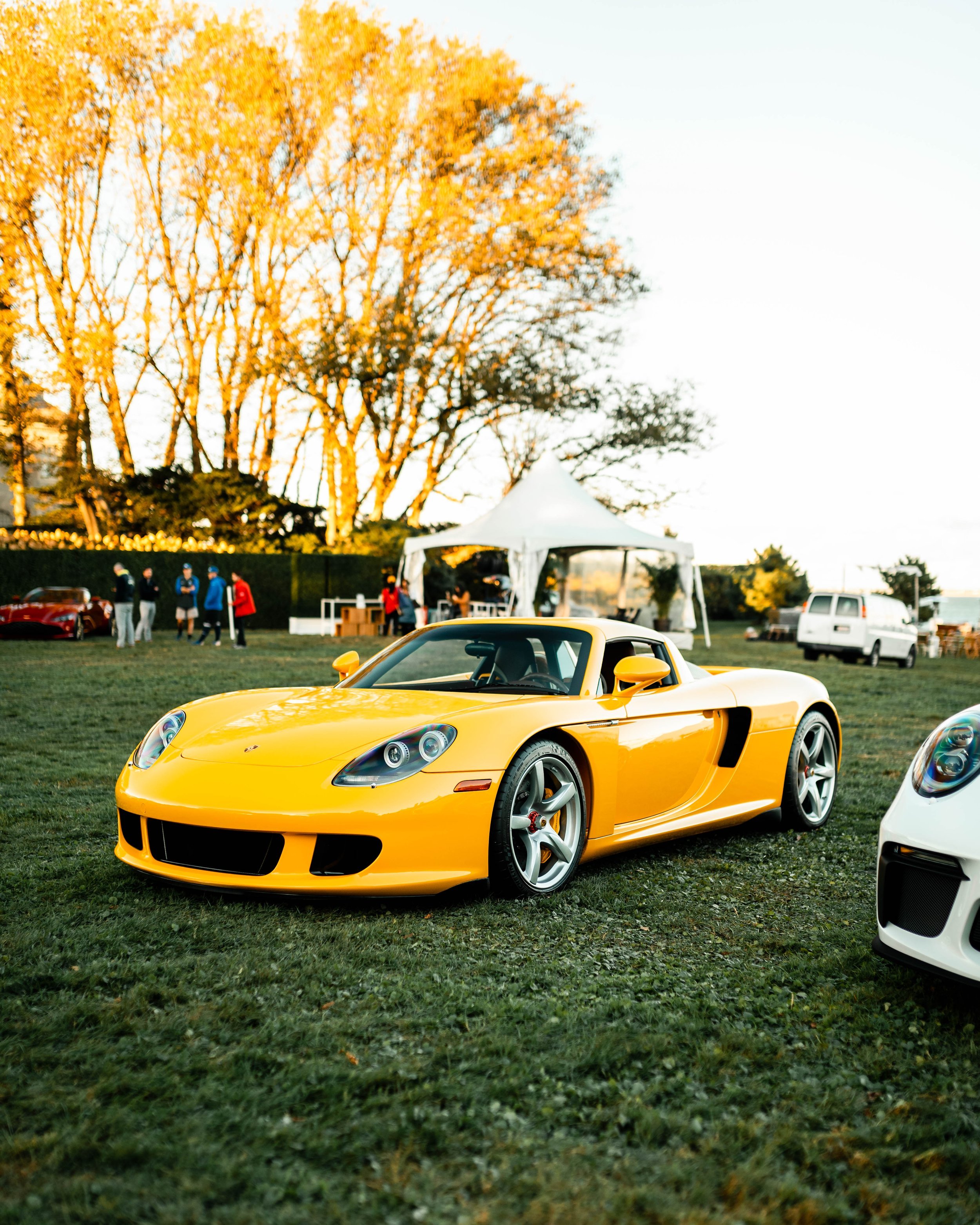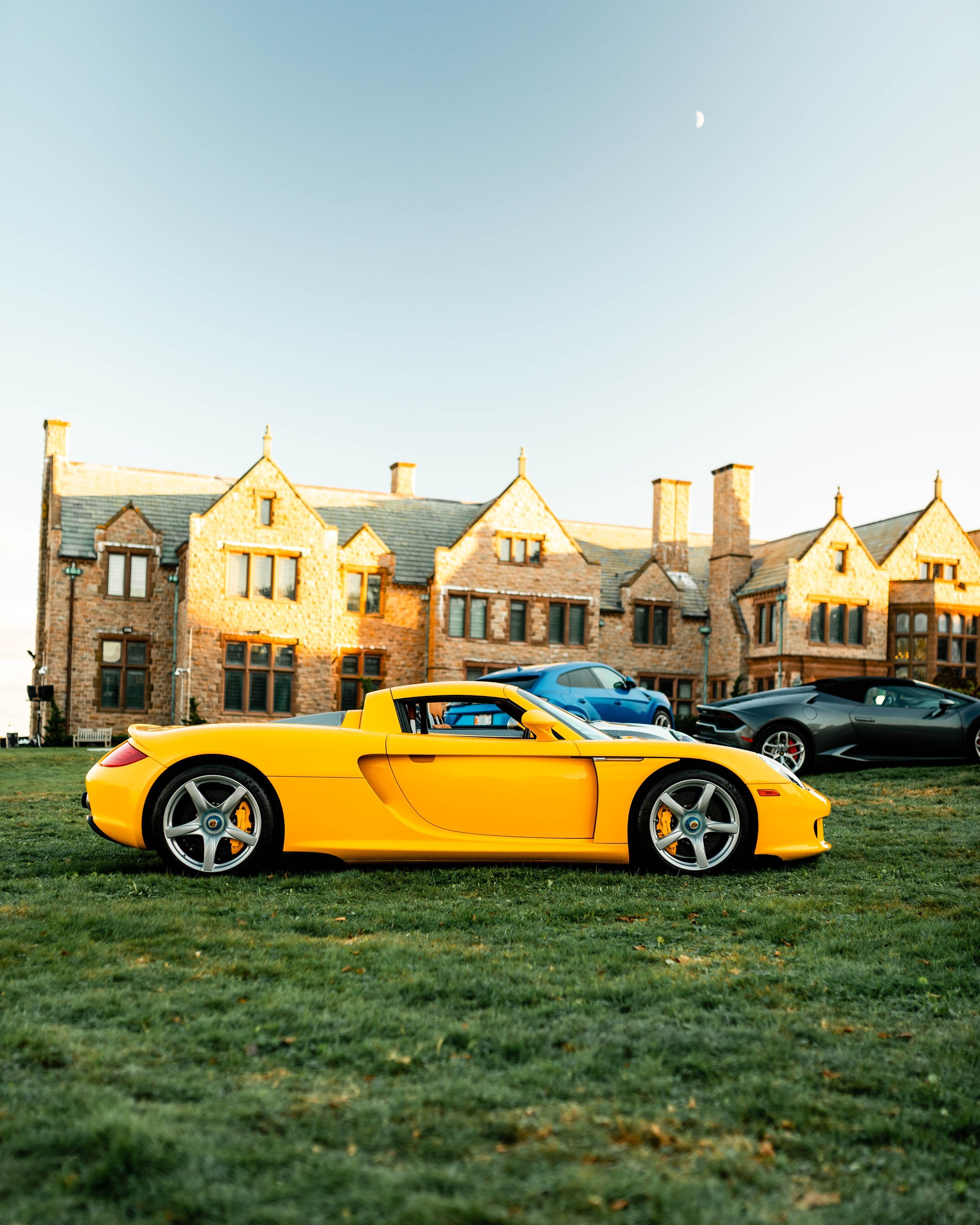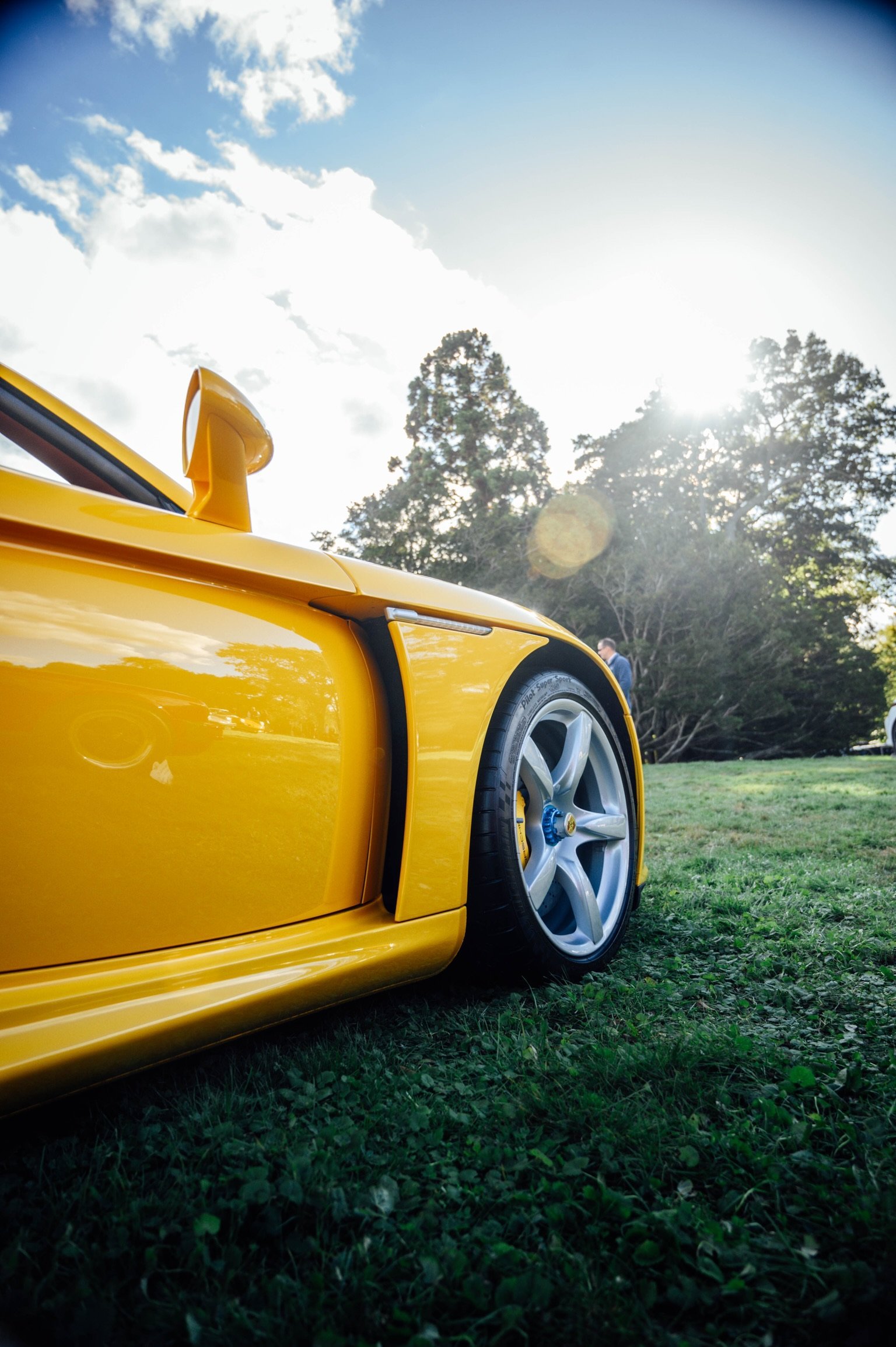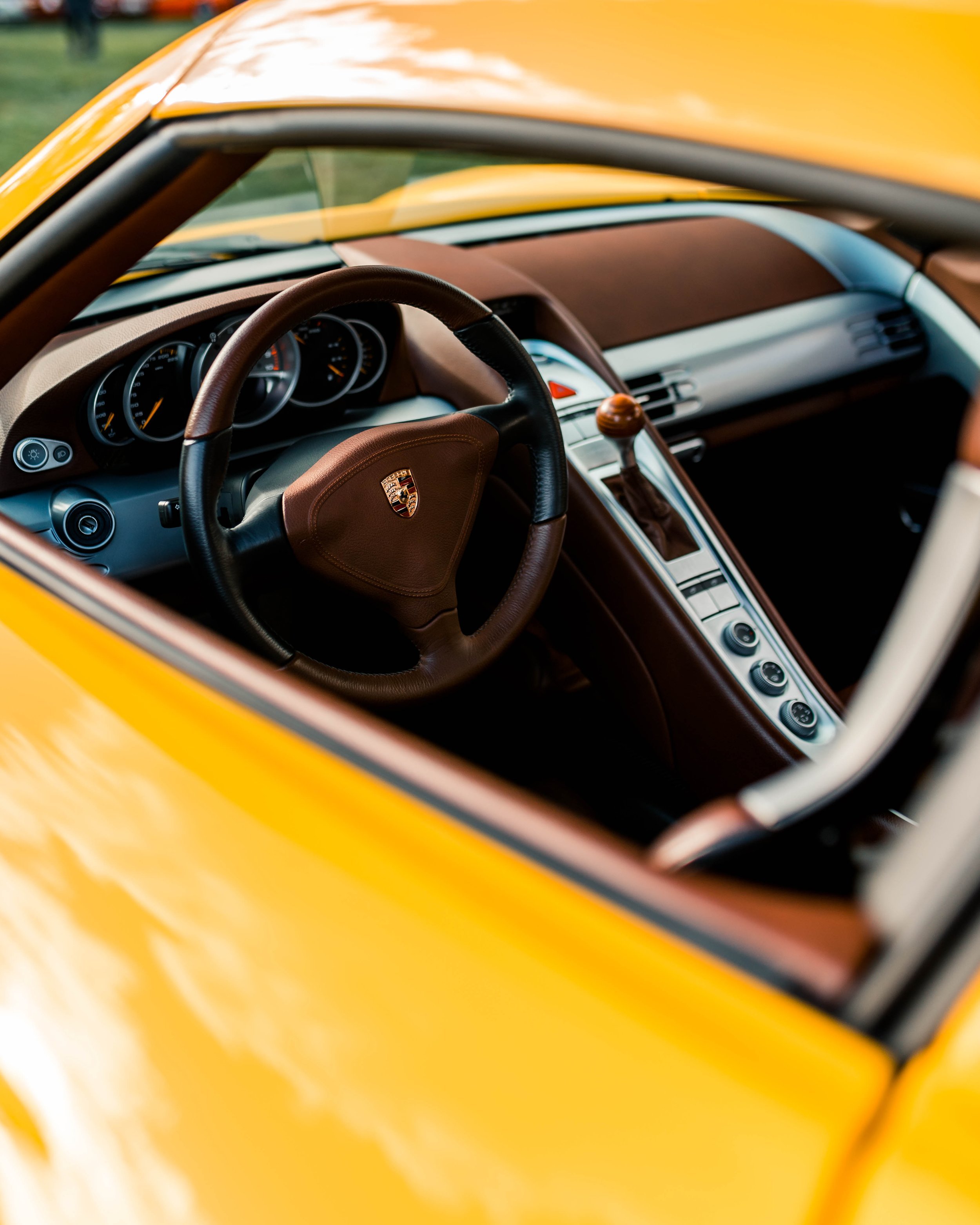2005 Porsche Carrera GT





The shrill of a Formula-1 derived V10 engine.
Carbon fiber monocoque and subframe.
Only 1270 were produced.
Simply put, the Porsche Carrera GT is the epitome of the analog supercar experience. With 603 horsepower produced from its 5.7-liter V10, it offers a thrilling, highly involved, and frankly, frightening experience behind the wheel. Every ounce of its engineering focus was meant to pair the driver with the Carrera GT, with nothing in between a pure, high-adrenaline analog driving experience, making it a true race car for the road.
With its high revving shrill, that sounds like no other Porsche streetcar, the V10 used in the Carrera GT is the dominating aspect of the car originally designed as a race engine for the Footwork Formula One team in the early 1990’s. The design was shelved and later reintroduced for Porsche’s Le Mans Prototype, but the engine was never raced due to rule changes. Porsche felt obligated to utilize this masterpiece of a powerplant and decided to utilize the engine in the Carrera GT concept car first shown at the Paris Motor Show in 2000. The concept car was built as more of an attention-getter than a test bed, however combined with significantly more interest than Porsche initially expected plus plentiful sales of the company’s new Cayenne allowed Porsche to produce the Carrera GT. The Carrera GT was first offered for sale in 2004, competing against the Ferrari Enzo, Ford GT, Mercedes-Benz SLR McLaren, and Pagani Zonda.
By utilizing a carbon-fiber monocoque and sub-frame, as well as carbon-ceramic brakes, Porsche’s engineers pushed the envelope of what was mechanically possible to offer a car that was as light as it was strong. A three-disc carbon-fiber racing clutch was also designed for the car, which measures 7.5 inches in diameter and is about a third the size of a normal clutch. This clutch is one of the defining factors of the Carrera GT driving experience and is quite difficult to operate smoothly. The car automatically cuts the engine if any throttle is used to help move the car from a stop, to prevent the clutch from getting damaged. The small clutch combined with the car’s dry-sump oil system allowed the engine to be mounted considerably lower, improving handling and lowering the center of gravity. Similar attention to detail has been applied to nearly every facet of the car. The ultra-lightweight forged magnesium wheels have center-locking bolts that are color-coded for each side of the car, as each side tightens opposite to the forward motion of the car, so they don’t become loose under heavy braking.
Driving the Carrera GT can be described as nothing short of explosive. The four-disc clutch allows the engine to rev very quickly, making throttle inputs incredibly precise at any speed. The engine, gearbox and differential are housed within a carbon fiber subframe, and the control arms are bolted directly to the chassis with spherical bushings. These engineering methods allow the driver to feel a direct sense of the road surface and how the car reacts. This also means the car offers little to no body roll and feels incredibly confident under hard driving.
Most supercars today are very approachable, allowing drivers to churn competitive lap times with comforts like all-wheel drive and dual-clutch transmissions. The Carrera GT is far from an easy car to pilot and requires a professional driver to reach the car’s full potential. The challenge is worth overcoming though, as once the driver is comfortable, the Carrera GT provides one of the most exhilarating driving experiences ever in the history of the automobile.
Carrera GT Specifications:
Configuration: Longitudinal Mid-Engine
Engine: 5.7 L Naturally Aspirated V10
Horsepower: 603 @ 8,000 RPM
Torque: 435 lb/ft. @ 5750 RPM
Max RPM: 8,400 RPM
Transmission: 6-speed manual
Curb Weight: 3043 lbs

